Our first attempt at anything like “real cooking” in the Remoska: Goat’s Cheese Pudding
Cheese Pudding is a regular at home, where we have a proper oven. It’s cheering, hearty comfort food that is quick and simple to make and makes use of leftovers.
CAVEAT: this is not a prescriptive recipe and I do not offer exact quantities. Cheese Pudding is a flexible dish that you can play around with until you find your preferred mix. Whatever you do, however it turns out, it will always be tasty.
Ingredients:
- Bread (stale, or at least day-old)
- Milk
- Eggs
- Cheese
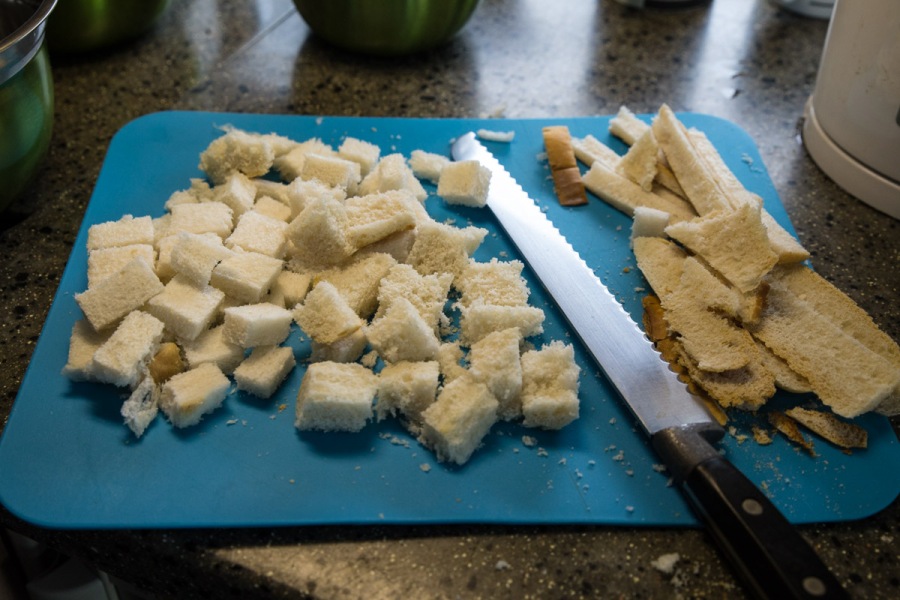
The bread used can be really stale, it doesn’t matter at all – just ensure there is no mould sprouting.
Normally you would make breadcrumbs but I have no facility for that in the campervan. I just removed the crusts (it’s ok to leave them on if you wish to) – and then cut the bread into small cubes.
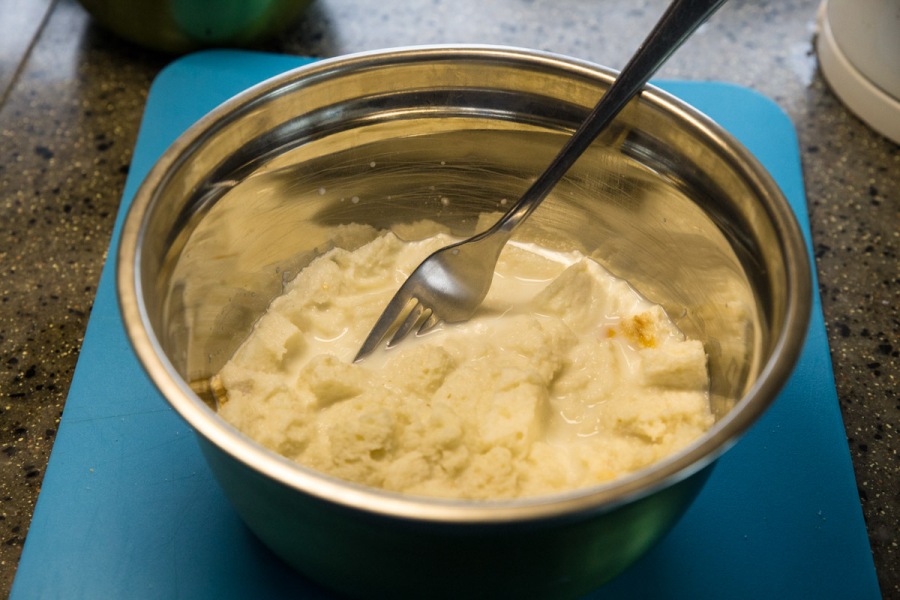
I gave the bread a good long soak in semi-skimmed milk (use any milk you like) and then broke it up with a fork.
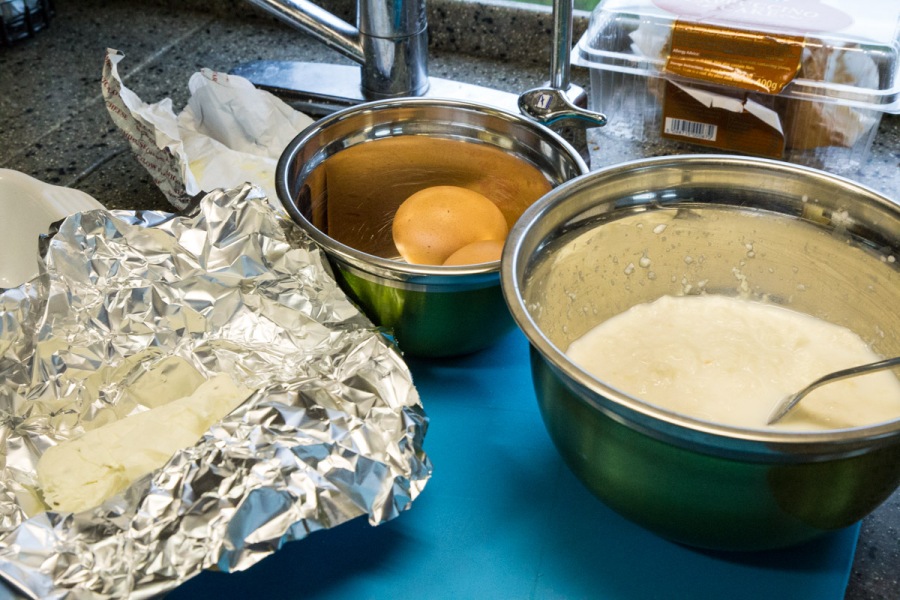
EGGS: Normally I would pop in three nice free-range eggs for this kind of quantity but today I had only two eggs at hand. More eggs gives more rise and a firmer texture; less eggs yields a softer pudding.
CHEESE: I usually use grated Cheddar Cheese, perhaps in combination with some Parmesan. Today I had a soft Goat’s Cheese to use up, plus a small amount of Brie-type. Cheese Pudding works well with any tasty cheese and I particularly favour the use of Sage Derby. Mixing a small quantity of a blue cheese in with a sharp non-blue works very well too. You can pull off a similar trick with a tasty smoked cheese such as Dorset Red, where a very small amount will add a real kick to a Cheddar or Lancashire base, for instance.
How much cheese you use will depend on how strong your cheese is, how tasty you want your finished pudding to be and, to be honest, how much you personally like cheese (or whether you are on a reducing diet). For two persons, 50 to 100 grams of flavoursome cheese ought to be plenty, though I have been known to use more and to make a pudding simply oozing with cheese. Usually my quantities are governed by what needs using up and how much of it remains.
ADDITIONS: Rarely is salt required, as cheese is naturally salty. Black pepper is always good, as is the use of small amounts of Mustard (dry powder or ready-mixed) or Cayenne Pepper. Dried Herbs in moderation work well – choose the right herb to play nicely with your chosen cheese(s). Chopped Spring Onions might be nice, or some chopped sun-dried tomato… whatever floats your particular cheesey boat. Sometimes I like to add something as a decorative topping that will supply some added texture e.g. flaked almonds.
I added nothing today as the Goat’s cheese that I was using was already flavoured with Thyme and Honey (!)
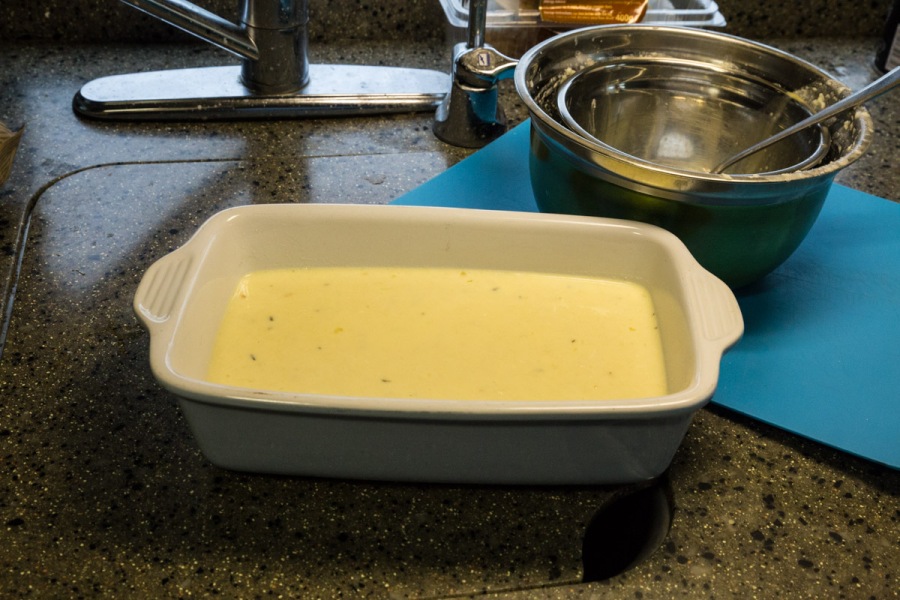
Use a baking dish that allows room for rising. Top with further grated cheese if desired. A few sliced tomatoes or a sprig of rosemary make an effective decoration.
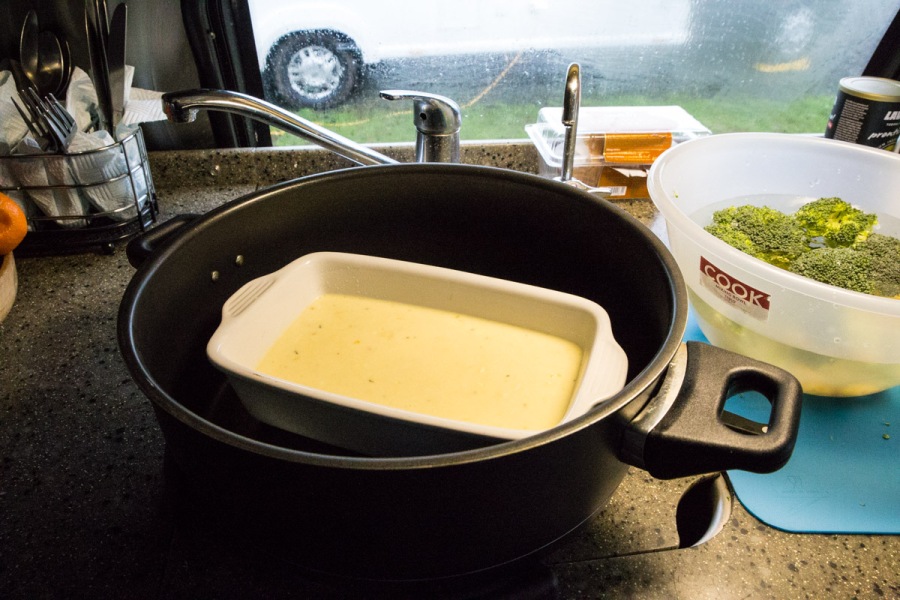
Okay, while that cooks, we’ll decide what to serve with the pudding. I often serve it with a crisp green salad. Mr Snail favours chips and petits pois. Today I went for new potatoes and some steamed broccoli, which I set to cook after the pudding had been on from a cold start for half an hour. (At home I would bake at around 190°C, going into the hot oven for around 40 – 45 minutes.)
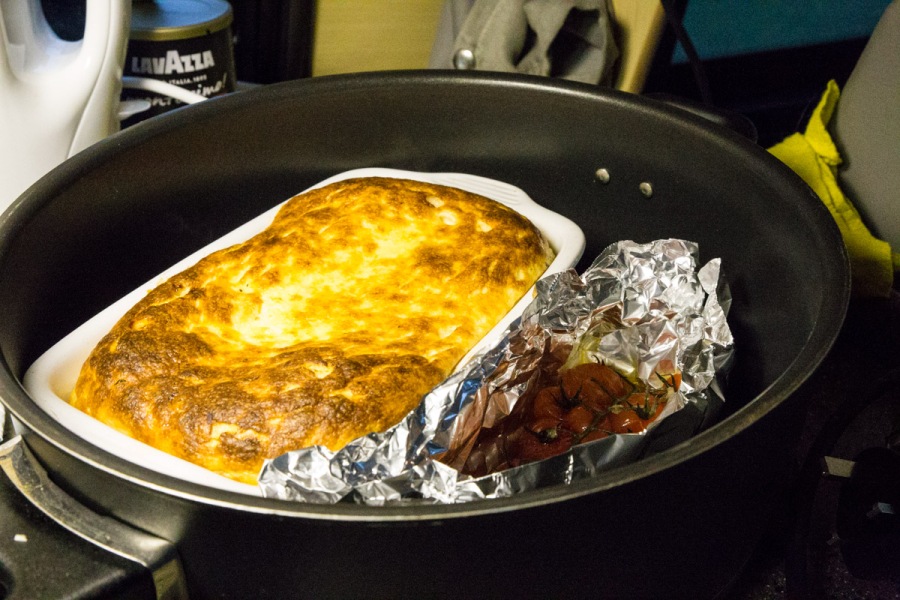
When the potatoes went on, I added some cherry tomatoes to the Remoska pan. The foil is simply an aid to removing the soft juicy tomatoes at serving time.
I had little idea how long it would take to bake in the Remoska, so allowed an hour but checked progress at the mid-point before committing the veg to the stove. After the first half hour, the pudding was forming a skin and beginning to rise around the edges. I judged that the second half hour would be enough… and it just about was. Perhaps an hour and five minutes would have rendered my pudding perfect.
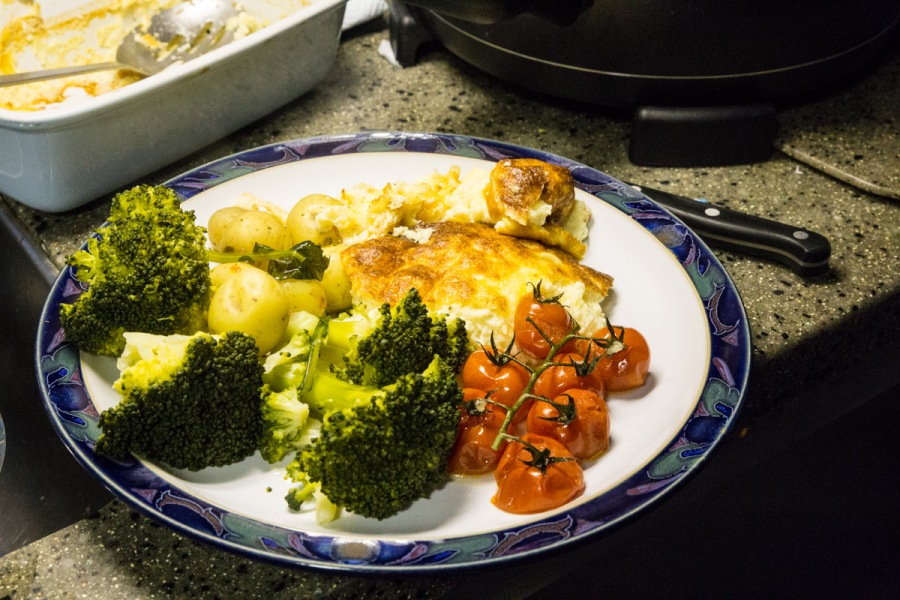
As I expected, using only two eggs (and a soft cheese) produced a very soft pudding which, in imitation of a soufflé, sagged as soon as it was spooned onto the plate. Three eggs would have served us better but I would far rather have some eggs left for breakfast tomorrow. In fact, the soft pudding made for excellent eating.
VERDICT: Will make a great Remoska stand-by meal. Boiling the potatoes in a pan of water and steaming the veg over the top meant that I had only one pan to clean, plus the baking dish. Snuggling the tomatoes in foil before adding them to the Remoska means that I had only to give the Remoska pan a quick wipe with a damp cloth before putting it away. My kind of van cooking.

One day I’ll make cheese pudding. 🙂
LikeLike
Try a variation – make cheese sandwiches (cheese and onion/tomato or cheese and ham for a twist) and turn them into cheesey bread and butter pudding. It’s all the same thing, really. Great comfort food
LikeLike